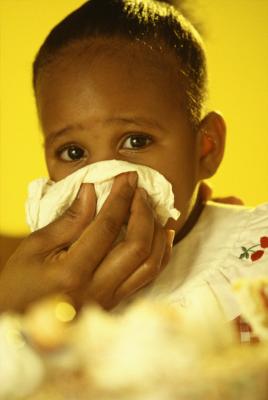“Hay fever” is the term commonly used to describe an allergy to grasses and pollens, including tree pollen. Often, these allergies are seasonal. Some toddlers are more sensitive to spring allergens, while others suffer most in the fall. Most toddlers who develop hay fever do not show symptoms until they are 3 or even 4 years old, according to BabyCenter.
Function
Allergies are the immune system’s over-reaction to something it considers to be a threat. The trigger is called an allergen. In the case of hay fever, that trigger is usually pollen. Antibodies produced by the immune system in response to the pollen tell certain cells to release chemicals to fight the invader. The chemicals are what cause common hay fever symptoms, according to KidsHealth.
Symptoms
Pollen is airborne, which means it enters the nose, causing something called allergic rhinitis. Toddlers may have a runny nose and may rub it often, turning it red and irritated. Toddlers may also cough a lot due to mucus dripping down the throat. The eyes can also be affected. Toddlers with hay fever often have red, itchy eyes with dark circles under them, according to the DrPaul website.
Considerations
Hay fever in toddlers cannot be prevented entirely. In fact, some children are more predisposed to developing them. Toddlers who have one or more parents who suffer from hay fever have a higher risk of developing seasonal allergies, according to the University of Arizona Health Sciences Center. Still, there are ways to reduce your child’s suffering. Monitor the pollen count in your area and keep your child indoors when the count is high. Give your toddler a bath after she plays outside to wash off any pollen residue before putting her to bed.
Treatments
Toddlers are often too young to be given over-the-counter allergy medicines, although some are not. Talk to your doctor before treating your toddler with any allergy medication. A humidifier can help a stuffy nose, and cool compresses can soothe hot, swollen eyes.
Warning
Anaphylaxis can occur in some children who have an extreme sensitivity to a certain type of allergen. Symptoms can include a swollen face, difficulty with breathing, lost consciousness, hives and low blood pressure. This severe reaction can be life threatening. Children who suffer from hay fever are more prone to developing anaphylaxis, but 80 percent of these incidents are caused by peanuts or tree nuts. Therefore, children who suffer from hay fever but do not have food allergies are less likely to have an anaphylactic reaction.





